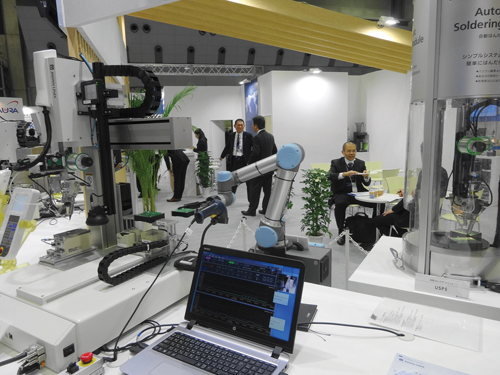

Manufacture Processes Diversify to Meet Demand Trends
A
s the global market continues to expand for smartphones, electric vehicles (EVs), hybrid electric vehicles (HEVs), and industrial equipment, manufacturers have been revving up the use of new manufacturing technologies and methods. Joining technologies, such as the welding of tabs to lithium-ion batteries and the welding of copper terminals to power devices, have also become diversified in accordance with products.

Japan Unix applies laser and ultrasonic joining technologies to soldering robots.
Joining Technologies
A common joining technology for the manufacture of electronics products is soldering, and joining technology for products other than electronic substrates has also been diversifying. Diffusion bonding is a technology, in which heat is applied in a vacuum by a temperature lower than melting point of the parent material thereby applying pressure, and bonding is done using the diffusion of atoms.
As no adhesive is used and materials are not melted, this bonding method provides stronger bonding and higher heat resistance compared with thermocompression bonding and other methods.
In resistance welding, metals are sandwiched to apply pressure, to which electricity is flown. It uses the principle that metals generate heat due to the resistance of metals themselves. This method enables various types of precision welding, including the joining of motor coils and copper terminals, welding of tabs to lithium-ion batteries, and welding of twisted wire terminals.

 English
English Japanese
Japanese